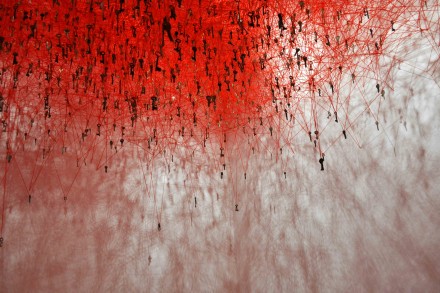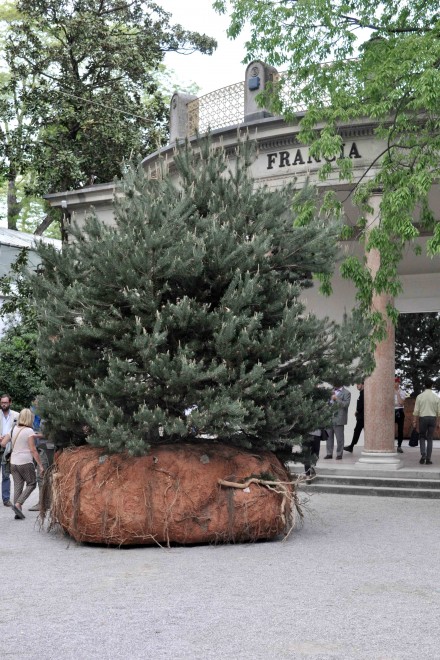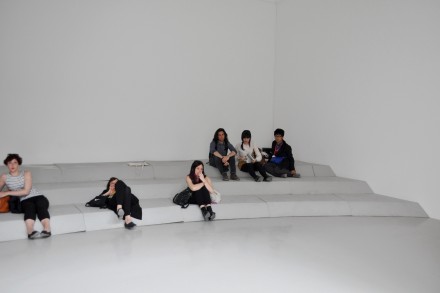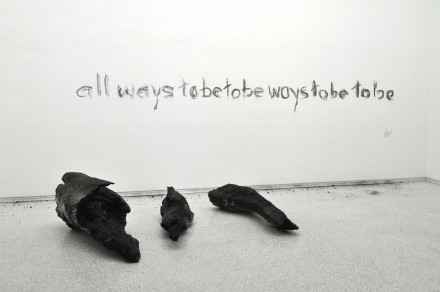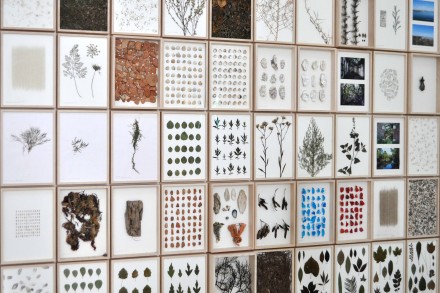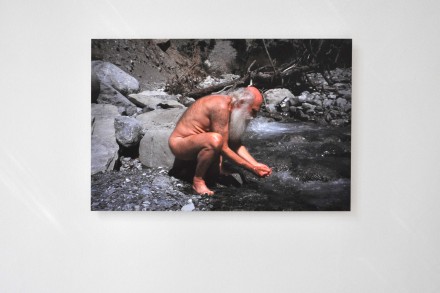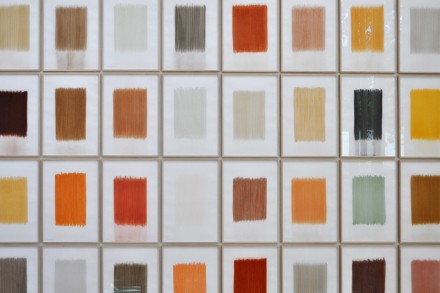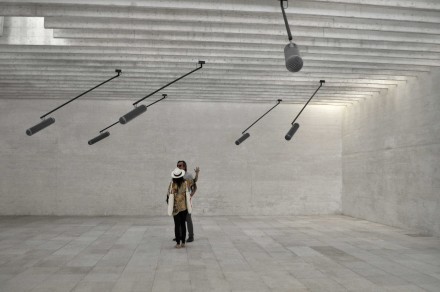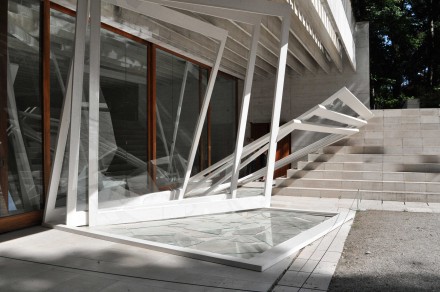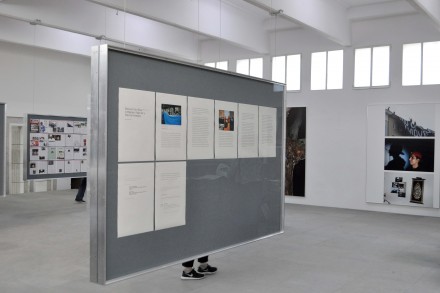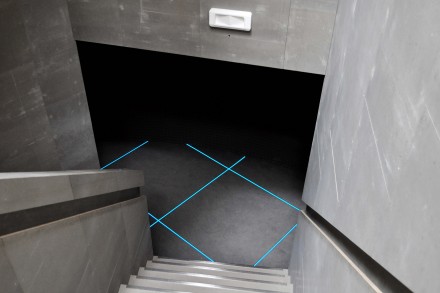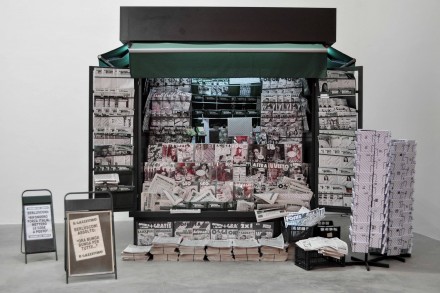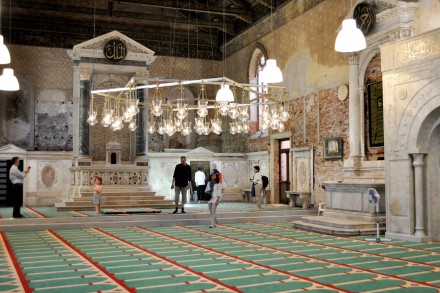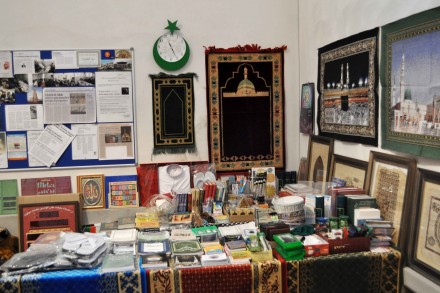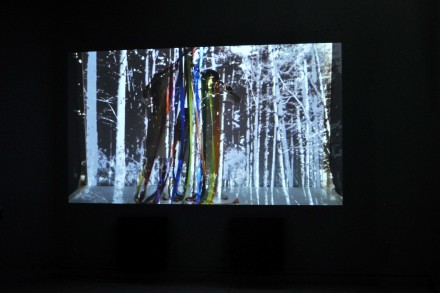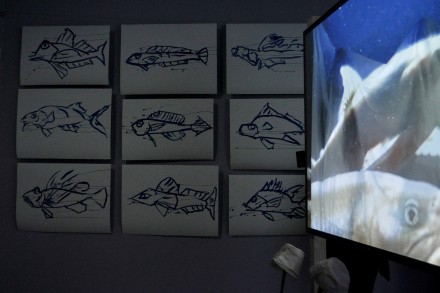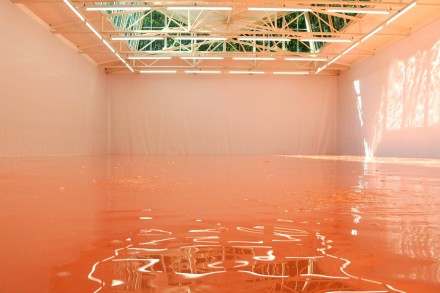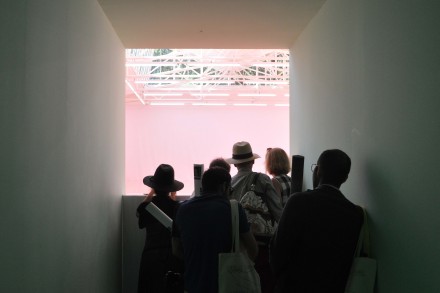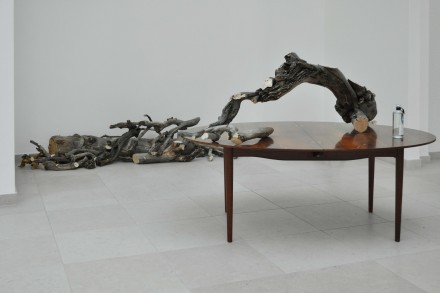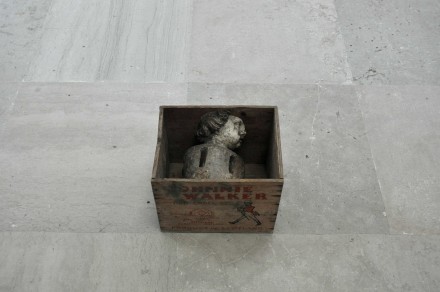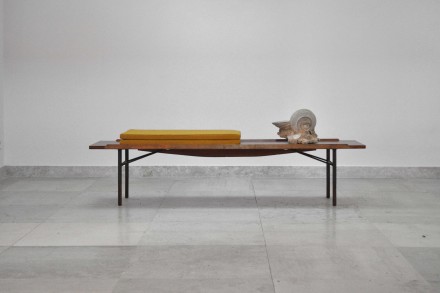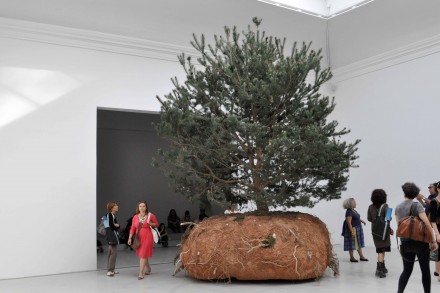
Céleste Boursier-Mougenot, Rêvolutions (2015), French Pavilion, via Sophie Kitching for Art Observed
Running concurrently with the Central Pavilion’s curated exhibition, the respective National Pavilions on view at the Giardini and Arsenale are one of Venice’s defining aspects. Featuring important solo exhibitions for both emerging and career artists, carefully-curated group shows and special projects, each pavilion’s focus allows the international perspective of the Biennale to truly take shape.
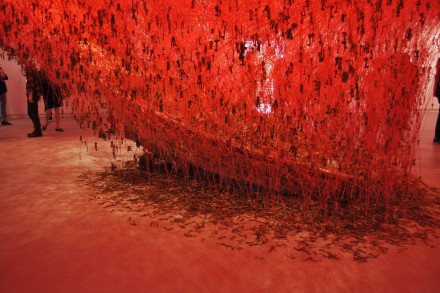
Chiharu Shiota, The Key in Hand (2015), Japanese Pavilion, via Sophie Kitching for Art Observed
At the Giardini, the pavilions for Germany, Canada, the United States, and 26 others await. Of particular note is the British Pavilion, where Sarah Lucas is presenting a new series of her typically suggestive sculptures, playing on sexual thematics and the occasional lowbrow joke. In one room, the explicit pose of Deep Cream Maradona, twisting around itself, is some of Lucas’s most impressive work in recent memory, countered well by a set of well-proportioned sculptures with cigarettes jutting out from the orifices.
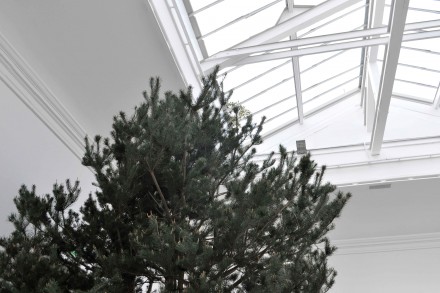
Céleste Boursier-Mougenot, Rêvolutions (2015), French Pavilion, via Sophie Kitching for Art Observed
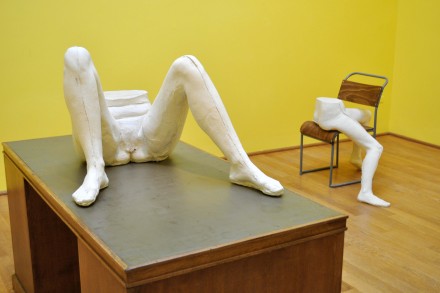
Sarah Lucas, Michelle and Pauline (2015), British Pavilion, via Sophie Kitching for Art Observed
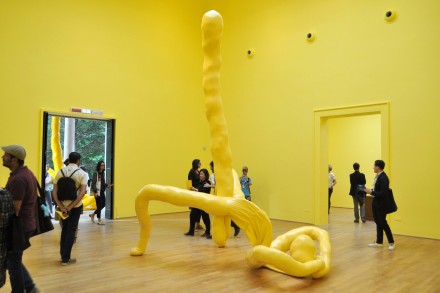
Sarah Lucas, Deep Cream Maradona (2015), British Pavilion, via Sophie Kitching for Art Observed
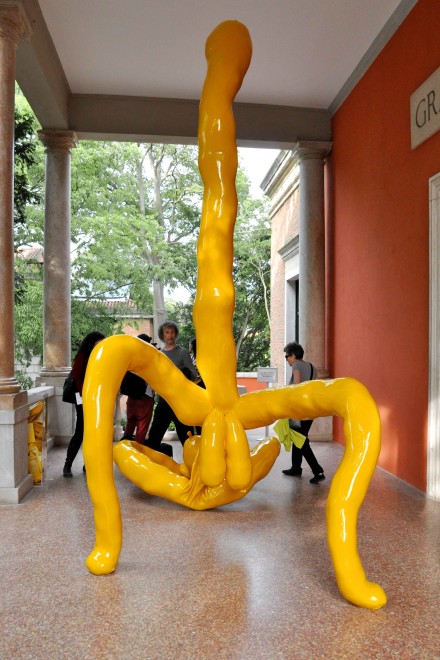
Sarah Lucas, Gold Cup Maradona (2015), British Pavilion, via Sophie Kitching for Art Observed
Another highlight of the Giardini was Japan’s curated show, featuring The Key In Hand, an installation by Chiharu Shiota, in which a small boat is engulfed in a cloud of keys, each adorned with red string. The colors, combined with the room’s lighting, is an illusory experience, immersing the viewer in swirl of color. In another packed exhibition, the Canadian pavilion had been transformed into a convenience store and art studio, where cluttered paint cans played off against the tightly arranged food products and snacks, a proposal for “unproductivity,” that seems to center specifically on incompleteness and consumption.
Herman de Vries, to be all ways to be (2015), Dutch Pavilion, via Sophie Kitching for Art Observed
Also of note at the Giardini was Camille Norment’s Rapture, a strange, tense installation that takes the piercing, resonant tones of the glass harmonica as a starting point to explore the duality of violence and peace, action and repose at the Nordic Pavilion. Featuring the otherworldly space of the pavilion prominently, the architecture is adorned with speakers playing a churning, high-pitched composition, in contrast with broken glass and debris littered across the rooms of the show. At the German Pavilion, Hito Steyerl leads a group of artists interested in the “changeability” of the image, with video playing inside a minimal, futuristic landscape. Joan Jonas also presented a video-centric installation at the United States pavilion, presenting a body of work investigating interactions between various species of animals.
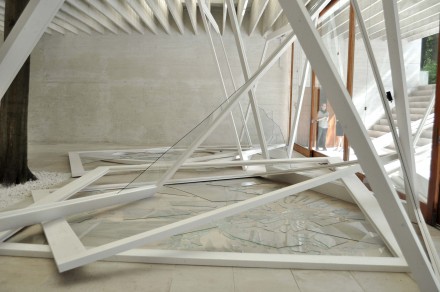
The Camille Norment, Rapture (2015), Nordic Pavilion, via Sophie Kitching for Art Observed
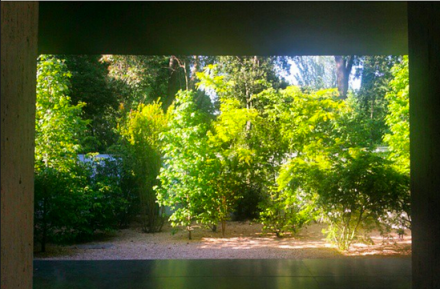
A minimalist intrusion at the Austrian Pavilion by Heimo Zobernig, via Art Observed
In another corner of the Giardini, artist Pamela Rosencranz had built a visceral, bubbling pool closely resembling skin tones. Contrasted with a pale green light diffused through the space, the work carried exceptional phenomenological weight given its minimal materials and sparse adornments. Similarly, artist Heimo Zobernig had created a stripped-bare framework at the Austrian Pavilion, using wood frameworks and black tiling to obscure aspects of the pavilion’s historical archives while leveling out the stepped flooring.
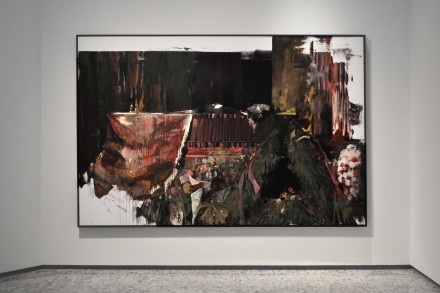
Adrien Ghenie, Duchamp’s Funeral II (2009), Darwin’s Room, Romanian Pavilion, via Sophie Kitching for Art Observed
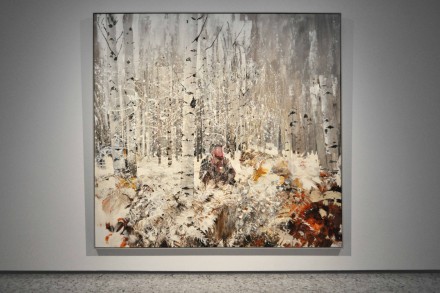
Adrien Ghenie, Persian Miniature (2015), Darwin’s Room, Romanian Pavilion, via Sophie Kitching for Art Observed
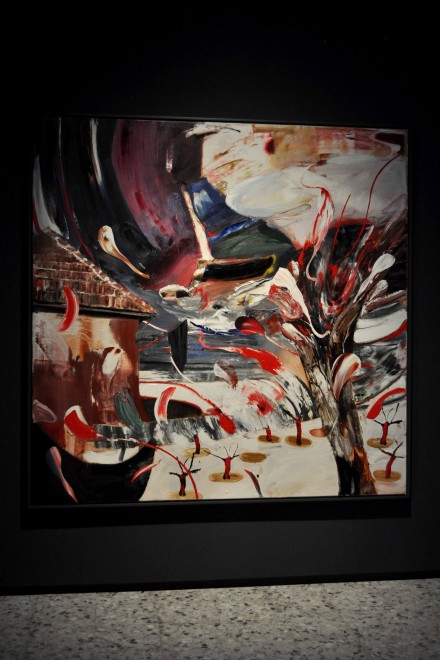
Adrien Ghenie, Black Flag (2015), Darwin’s Room, Romanian Pavilion, via Sophie Kitching for Art Observed
Another highlight of the exhibition is the installation at the Romanian Pavilion, where artist Adrien Ghenie’s work takes on the writings of Charles Darwin, translating them into a surreal series of musings on the nature of history and humanity, intertwined with the shifting relationships to time and perception. At the Danish Pavilion, Danh Vo (who is also curating an exhibition at the Punta Della Dogana), took a similar tack on the notion of time and artifacts, constructing hybridized sculptures from reclaimed busts and statues.
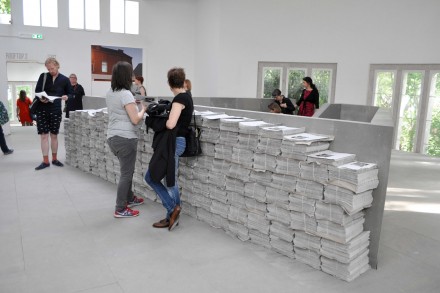
Tobias Zielony, The Citizens (2015), German Pavilion, via Sophie Kitching for Art Observed
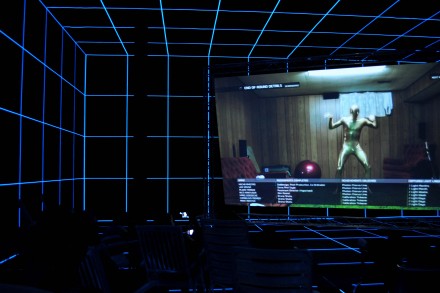
Hito Steyerl, Factory of the Sun (2015), German Pavilion, via Sophie Kitching for Art Observed
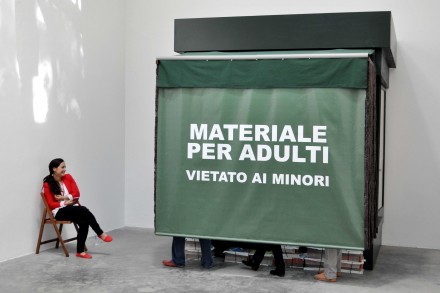
Francesc Ruiz the Spanish Pavilion, via Sophie Kitching for Art Observed
At the Arsenale, an additional set of pavilions awaited exhibition-goers. A particular draw was the curated exhibition at the Turkish Pavilion, where artist Sarkis had installed a series of works exploring and commemorating the genocide committed by the Ottoman Turkish kingdom against Armenian citizens exactly one century ago. Also of note was artist Vincent J.F. Huang’s installation for the small Pacific nation of Tuvalu. Featuring a walkway suspended over a serene blue pool, the artist brought explicit attention to the rising sea levels in the country, caused by melting polar ice caps, and the threat this natural change poses to the nation’s inhabitants.
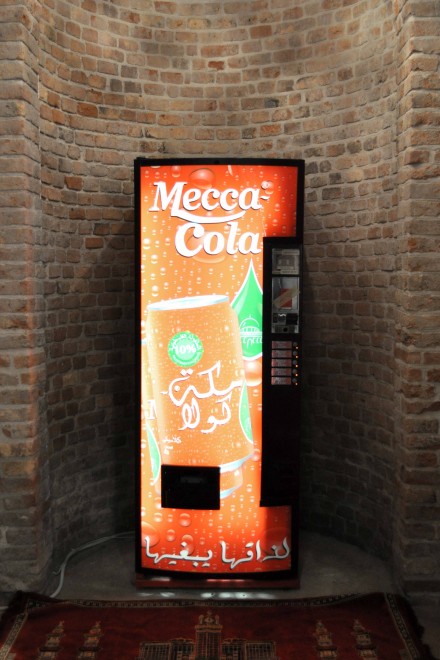
Christoph Büchel’s Mosque installation, Icelandic Pavilion, via Sophie Kitching for Art Observed
Other pavilions were spread throughout the city, making for a more embedded, local experience in the exploration of Venice, its populations and history. Nowhere was this better seen, perhaps, than at artist Christoph Büchel’s project for the Icelandic Pavilion. Taking the city’s historic lack of mosques as his inspiration, the artist has converted the pavilion of the nordic nation (with its own lack of immigration as a point of juxtaposition) into a functioning mosque, complete with low-hanging lamps, prayer mats, a washroom and library, turning the former church into a space for the city’s Muslim population. The installation has already been threatened with closure by city officials, who claim it is a “threat to safety.”
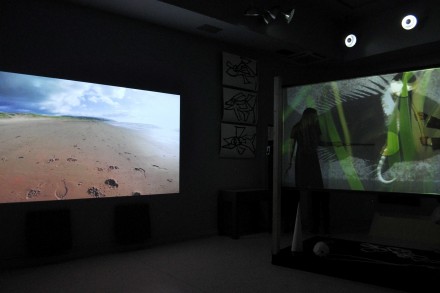
Joan Jonas, They Come to Us without a Word (2015), US Pavilion, via Sophie Kitching for Art Observed
With over 44 nationally-curated exhibitions, the Biennale makes seeing each show in full a challenge, but encourages the intrepid viewer to make the attempt. The exhibitions will be on view in total through November 22nd.
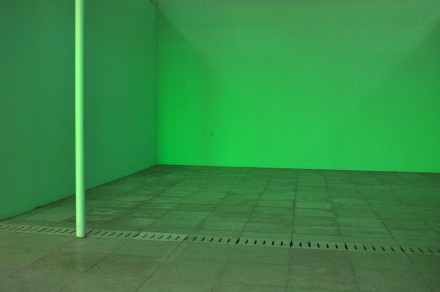
Pamela Rosencranz, Our Product (2015), Swiss Pavilion, via Sophie Kitching for Art Observed
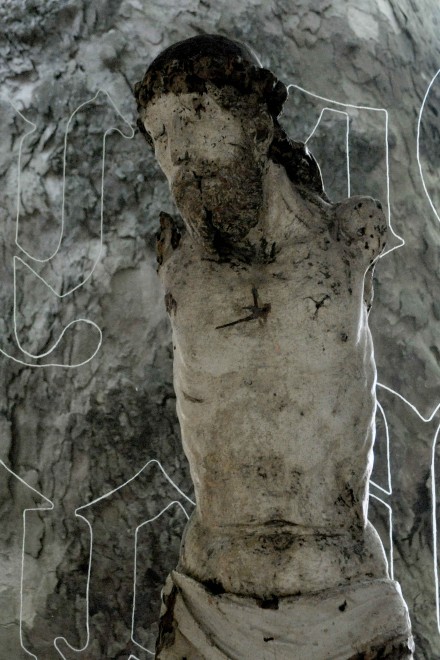
Danh Vo, Mothertongue (2015), Danish Pavilion, via Sophie Kitching for Art Observed
All images courtesy of Sophie Kitching for Art Observed
—D. Creahan
Read more:
“56th Venice Biennale review” [The Guardian]
“Officials Threaten to Close Mosque Installation at Venice Biennale” [NYT]
“Venice Biennale Represents Rebalancing in the Art World” [ABC]
“The best of Venice Biennale 2015 – in pictures” [The Guardian]
“Chiharu Shiota weaves an immersive labyrinth of keys and yarn” [Designboom]




